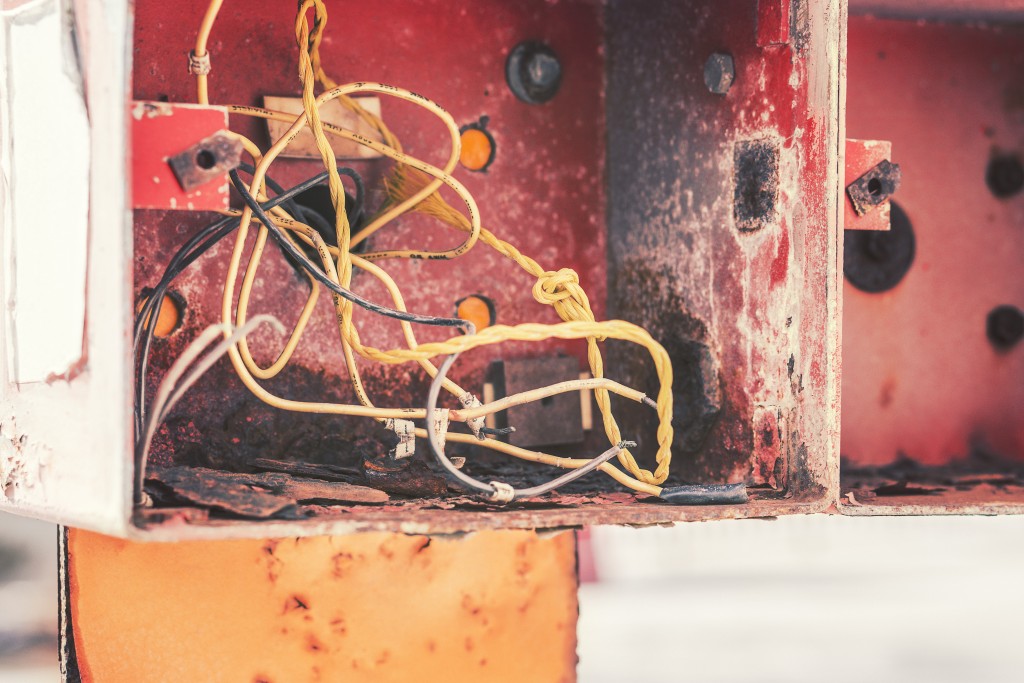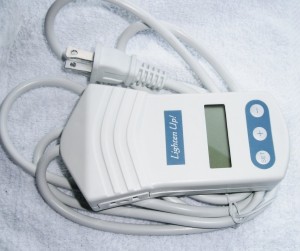DIY Dawn Simulator
 If you’re short on funds, or just enjoy doing things yourself, a DIY Dawn Simulator may be right up your alley. It can be done with a few simple items you may already have on hand, with purpose-built products to assist, or built maker-style and programmed with a microcontroller — it’s totally up to you! Read on as I give an overview of some DIY options for your very own wake-up light.
If you’re short on funds, or just enjoy doing things yourself, a DIY Dawn Simulator may be right up your alley. It can be done with a few simple items you may already have on hand, with purpose-built products to assist, or built maker-style and programmed with a microcontroller — it’s totally up to you! Read on as I give an overview of some DIY options for your very own wake-up light.
Bare Bones DIY “Dawn Simulator”
I’ve used this approach for quite some time. The term “dawn simulator” is used loosely here, since we’re not making a very close approximation sunrise as there’s little control over color temperature or time the light reaches full brightness. But, this approach is still leaps and bounds above the infamous flight-or-flight alarm clock response that will waken you in a panic. With this approach, you need 3 simple items, which are probably already lying around your house:
Let’s start with the bulb. For dawn simulation, we’re going to want what seems like a really crappy light bulb — one that comes on dim and slowly reaches its full brightness as it warms up. This is typically achieved with a covered compact fluorescent (CFL) bulb that you can find at Home Depot, Lowes, or Amazon. Covered CFLs are slower to reach full brightness, turning on around 50% brightness and increasing for 1-3 minutes as they warm up. Shoot for one with 2700K color temperature, which produces a more yellow light, similar to the Sun. Once you’ve got the bulb, go ahead and install it into your lamp and give it try to see how slowly it comes on compared to incandescent or LED bulbs.
Next, you’ll need a wall timer. You can get as simple or as fancy as you like. The wall timer I use has 7 day programmability with multiple on/off times, but it was still only around $15. Set your desired wake-up time, plug the lamp into the timer, and the timer into the wall outlet and you’re good to go! Position the lamp so that light will be striking your eyes in the morning (this why I use a flexible desk lamp) and prepare yourself for the joys of waking to light!
LightenUp! DIY Dawn Simulator
 There is a company called LigtenUp! that produces a couple of purpose-built timers for DIY dawn simulators, using your own lamp and an incandescent or halogen bulb — try a “natural spectrum” Verilux or Chromalux bulb. The Model 308 has 7-day programmability, so you can set a later wake-up time for the weekends, if you prefer. It also features configurable “sunrise” duration from 30 to 90 minutes, slowly increasing the bulb brightness, naturally waking your body with light. Though the cost is a little more than the above bare-bones approach, I think this may be preferable simply due to the adjustable sunrise duration, as you really want the light level to increase gradually over 30 minutes or more to more closely simulate dawn. It also has a battery backup, so you don’t have to reprogram the unit if power is lost.
There is a company called LigtenUp! that produces a couple of purpose-built timers for DIY dawn simulators, using your own lamp and an incandescent or halogen bulb — try a “natural spectrum” Verilux or Chromalux bulb. The Model 308 has 7-day programmability, so you can set a later wake-up time for the weekends, if you prefer. It also features configurable “sunrise” duration from 30 to 90 minutes, slowly increasing the bulb brightness, naturally waking your body with light. Though the cost is a little more than the above bare-bones approach, I think this may be preferable simply due to the adjustable sunrise duration, as you really want the light level to increase gradually over 30 minutes or more to more closely simulate dawn. It also has a battery backup, so you don’t have to reprogram the unit if power is lost.
LightenUp! also offers the Model 205, that you simply plug in 8.5 hours before you want to wake up. At the 8 hour mark, the unit turns on your lamp at low brightness and it automatically begins a 30-minute dawn process, gradually increasing to full brightness.
If you have a programmable timer you want to use, but can’t easily simulate the 30-minute dawn process, check out their Model 212, which simply brightens a light over half an hour, but requires your own timer to turn on.
Electrical Engineer’s/Maker’s DIY Dawn Simulator
If you’re a maker or an electrical engineer, or just want to dabble in microcontrollers and circuits, then you can get as complicated as you like with your DIY dawn simulator. This topic is a bit beyond my realm of expertise, but check out ElectroBob’s Sunrise Simulator (featured on Life Hacker, Hack A Day, etc.), which uses a standard digital alarm clock, a halogen lamp, and a microcontroller to create a programmable dawn simulator. If you’re familiar with X10 products, “jimmc” at CalTech as an inexpensive dawn simulator set up for around $90 (though at this price point, you could easily purchase a basic, purpose-built dawn simulator like the Philips HF3500).
Whichever DIY approach you use, I wish you the best of luck! I’d love to hear your feedback on these approaches, or if you’ve come up with a DIY dawn simulator of your own, tell me about it in the comments!




I like your website. It has a clean and uncomplicated look. It also has useful advice. Your article on waking up early was very helpful. I used to wake up between 5 & 5:30 am without any alarms. This went on for years and years. Then suddenly stopped. I am going to try your advice and see what happens.
Your website looks new. Good luck with it.
Kate
Thanks Kate! Come back soon and let me know how it turned out!.